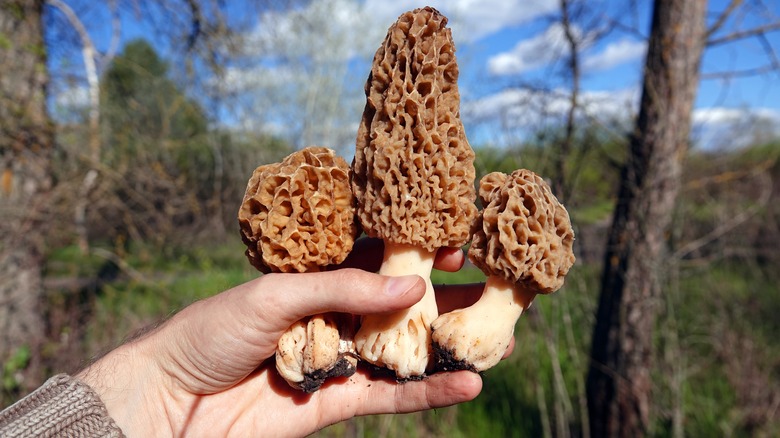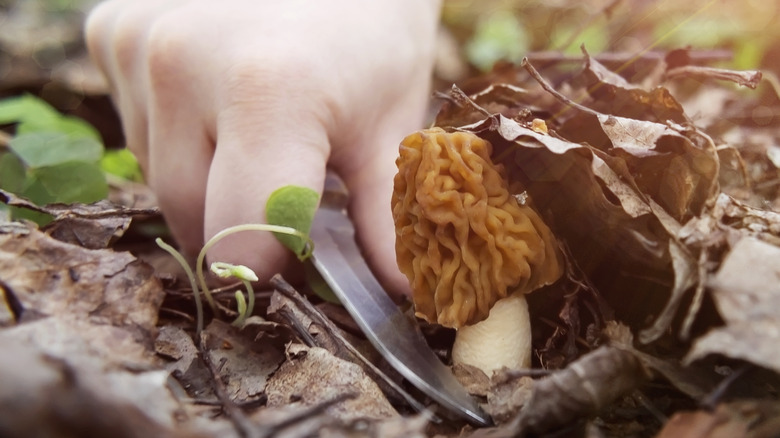Minnesota's State Mushroom Is A Coveted Culinary Treat
The great state of Minnesota sits proudly at the top of the country, bordered by Canada, North and South Dakota, Iowa, and Wisconsin. Part of the nation's Midwest, it is home to the Twin Cities, The Mall of America, absolutely stunning mountains, forests, and lakes, and claims many famous Americans, like Charles Lindbergh and Judy Garland (via About Minnesota). While the Midwest is known for its kind people, the people of Minnesota take it to another level, garnering the phrase "Minnesota nice," which means its residents will go out of their way to be friendly, according to Movoto.
Like every American state, Minnesota has its own state flag, state bird (it's the loon), and state flower (Pink Lady's Slipper), per About Minnesota. It joins only half the nation in having its own state fruit (the honeycrisp apple), and is one of twelve states with an official state sport, which happens to be hockey, per Slate. What is even more rare in the U.S. is to have a state mushroom, which (you guessed it) Minnesota has, and it shares this honor with Oregon and Texas.
Maybe it's the abundant forests that create a nice shady, moist spot for fungi to grow, or perhaps they represent the coziness Minnesotans need when winter temps frequently drop below zero (think mushroom soups and green bean casserole). Whatever the reason, Minnesotans chose an elusive yet prized mushroom to represent their beloved state.
Behold, the morel
The Minnesota Mycological Society reports that they officially designated the morel the state mushroom in 1984. The yellow morel or Morchella esculenta is also known as the sponge mushroom or honeycomb morel, and they have a wrinkly, cone-shaped top attached to a wide, hollow stem. Morels can range in color from off-white to tan to brown or gray, and they typically reach 2-6 inches in length, according to the Minnesota Secretary of State's website. Although very recognizable due to their unusual appearance, morels are difficult to come by. According to The Spruce, cultivating morels is extremely difficult, so most people resort to foraging for them in the wild.
Morels have a very short growing season, sprouting in the springtime in many states across the country. In Minnesota, they are primarily found in forests and fields in the southeastern part of the state, per State Symbols USA. Finding them also requires a keen eye, as their coloring can camouflage them in their surroundings, and they are often grown under the cover of ground leaves. Many morel hunters keep the rare treats for themselves, sautéing, frying, or serving them on toast, but when they are put up for sale, expect a hefty price tag due to their rarity and desirability, according to Kitchn. The flavor of morels can be described as earthy and nutty, and both the caps and stems can be used in recipes.

